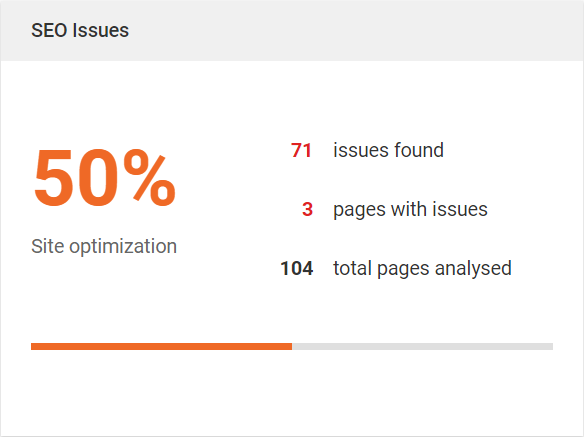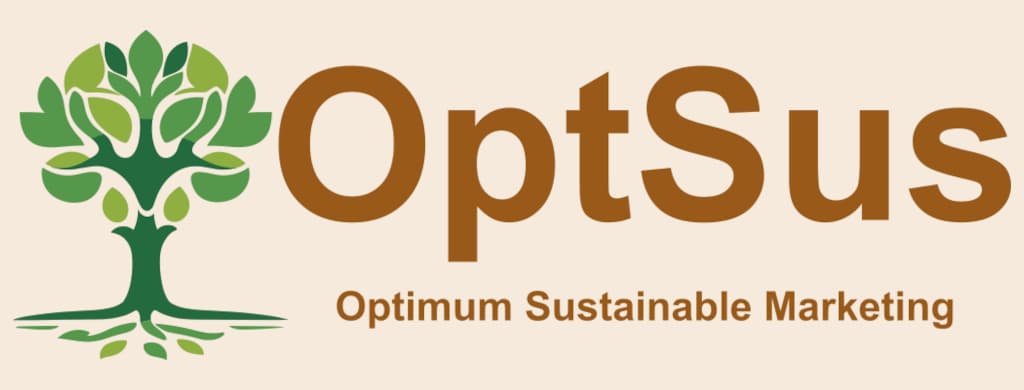The foundation of online marketing is on-site SEO. This is because search engines and social media will use the information found here to send traffic to your site. Before you even begin sharing content or paying for ads, it’s important to get your on-site SEO right. While you are working on other marketing activities, this will allow your content to get organic search traffic and bring in visitors from social media sharing. Here’s how on-site SEO works and why it needs to be the foundation of your online marketing activities.
Search Results Snippet
Have a look at the search results page when you look for “OptSus” on Google. Here’s an example from that search.

There are several key components to this search result, and they come from on-site SEO.
- Blue Title – This comes from the page title as it is set with the Meta Title tag.
- Green URL – The URL comes directly from the page where the content is found.
- Black Description – Using the Meta Description tag, it is possible to change the text that appears here.
- Blue Links – Those links come from the cornerstone content in the menu at the top of the page.
While Google will typically publish the text you enter for each of the fields listed above, this is not guaranteed. The search engine does rewrite title and description text when it decides the suggested text is not a good fit for the page. The example above comes from when the OptSus website was just being put together and Google created the page description that is shown. If your search appears different, that is because the meta description for the page has been updated.
Social Media Sharing Cards
Those same meta tags that are important for on-site SEO and shown in the search results also appear in social media shares. Here is an example an article that OptSus shared on Facebook.
The information that is pulled from the page begins with the image of the car and extends below that. The image is from the Featured Image that was set in WordPress. If no featured image is set, then Facebook will try to find an image on the page that can be used. Next, the URL shown is only the domain for the page and not the full link to the shared content. The bold title comes directly from the Meta Title tag and the description is from the Meta Description tag.
By getting the on-site SEO right, you can increase traffic from social media by enticing people to click your links when anyone shares your content. Automatically bringing a related image, title, and description into the post helps people that are sharing your content to make it look great on social media.
Organic Search Traffic
Now that you understand how these meta tags and images are used in search results and social media shares, let’s review how that can be used to boost your organic search traffic.
The way you write the title and description for each piece of content on your site can entice people to click those links. When they see the description in the list of search results, you want them to choose your link over all the others. Similarly, when they read the title as they are scrolling through Facebook – you want them to stop and take notice of your link.
Be sure to write titles and descriptions that are interesting and relevant to your content. They should grab the reader’s attention and make them want to learn more. However, it is equally important that the content on the page delivers on any promise you make in the title and description. That is, you don’t want people to just click and bounce when they realize your content is not what they expected.
Domain Authority
You understand how on-site SEO helps entice people to visit your site. Now we’ll delve into the way that good on-site SEO can help search engines understand what your site is about.
While search engines are becoming better at understanding content, it’s still a good idea to help them out when you can. By applying proper on-site SEO, you’re making it easy for search engines to crawl your website and categorize your content. As more and more information is gathered about your site, you begin to build domain authority. That is, the search engine begins to understand what your website is about in a more general way and attribute some value to what you have to say in a particular area of expertise.
The website for a law firm that regularly publishes content about practicing real estate law in Raleigh will begin to be recognized as an authority on that topic. When a new article is published within this area of expertise, it will naturally rank higher than the competition which does not have the same level of authority in this area. On-site SEO makes it easier for the search engine to understand the content you are publishing and increase your domain authority.
Measuring & Improving On-Site SEO
One part of the online marketing dashboard that is included with OptSus WordPress Management measures on-site SEO. It provides a simple measurement of the optimization across the whole site as shown below.

This example shows a site that is 50% optimized. The goal is to increase this figure over time. Other sections of the dashboard list what needs to be changed, how to make those change, and which pages require those adjustments.
There are many sites that list all the on-site SEO requirements, a favorite site for this is Moz and they have a series of articles about this subject.
While it can be difficult to reach 100%, the goal is simply to achieve the highest figure possible. Some sites will have requirements that break some of the rules of on-site SEO, but perfection is not required in this area. Rather, you want to improve the site and be watch for any dips because that may signal a problem on the site. It’s better to address any on-site SEO problems early to avoid bigger problems in organic search results.
